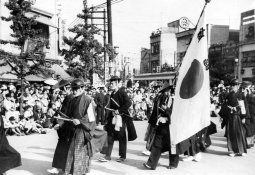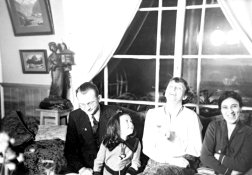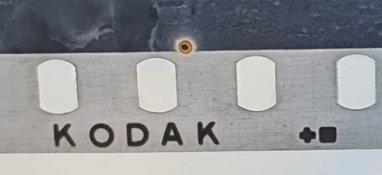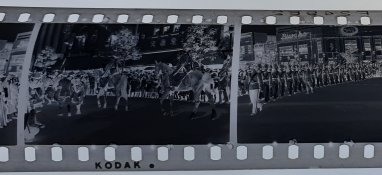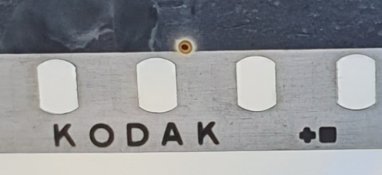AndrewAust
Member
Hello
My father was in Japan from late 1945 to March 1946, during which time he was stationed for several weeks at the British Consulate as a guard. He wrote many letters back home about the conditions there but didn't have a camera; he bought photos from others.
Among his various personal items I found two rolls of Eastman Kodak 35mm nitrate film with the code + and box, indicating the film was made in Rochester in 1935. The two rolls (a) document the annual Yokohama parade (see example) and (b) a family that probably lived in Yokohama and attended the parade (see example), as their daughter appears in two photos of the parade among a group of Japanese women and children.
At first I thought my father had taken these photos but then realised he couldn't have as they were probably taken in 1935 or 1936 and before 1939. Extensive research has failed to locate the source of these photos, although there is a chance they were taken by one uncle who worked on ships (but this seems very unlikely). The curious thing is that these photos were never printed and my father left no clues as to their origin. It seems a strange coincidence that they were taken in the location where he served 10 years later.
Local research with a Japanese historian based in Yokohama has confirmed they were taken before the war (there are various clues in the photos of the parade).
And, just to add to this mystery, the negatives are stored in an pre-war AGFA film aluminium canister.
Any thoughts on how to find how who may have taken these photos?
Andrew
My father was in Japan from late 1945 to March 1946, during which time he was stationed for several weeks at the British Consulate as a guard. He wrote many letters back home about the conditions there but didn't have a camera; he bought photos from others.
Among his various personal items I found two rolls of Eastman Kodak 35mm nitrate film with the code + and box, indicating the film was made in Rochester in 1935. The two rolls (a) document the annual Yokohama parade (see example) and (b) a family that probably lived in Yokohama and attended the parade (see example), as their daughter appears in two photos of the parade among a group of Japanese women and children.
At first I thought my father had taken these photos but then realised he couldn't have as they were probably taken in 1935 or 1936 and before 1939. Extensive research has failed to locate the source of these photos, although there is a chance they were taken by one uncle who worked on ships (but this seems very unlikely). The curious thing is that these photos were never printed and my father left no clues as to their origin. It seems a strange coincidence that they were taken in the location where he served 10 years later.
Local research with a Japanese historian based in Yokohama has confirmed they were taken before the war (there are various clues in the photos of the parade).
And, just to add to this mystery, the negatives are stored in an pre-war AGFA film aluminium canister.
Any thoughts on how to find how who may have taken these photos?
Andrew








